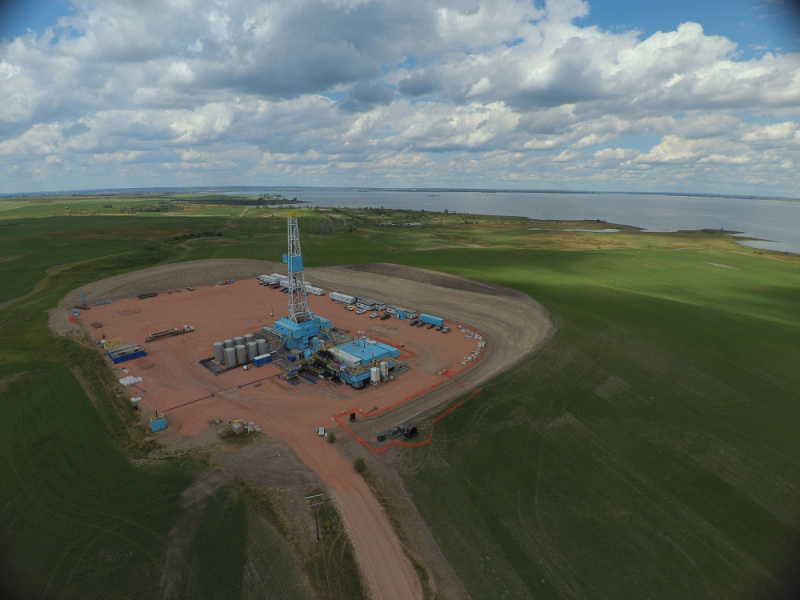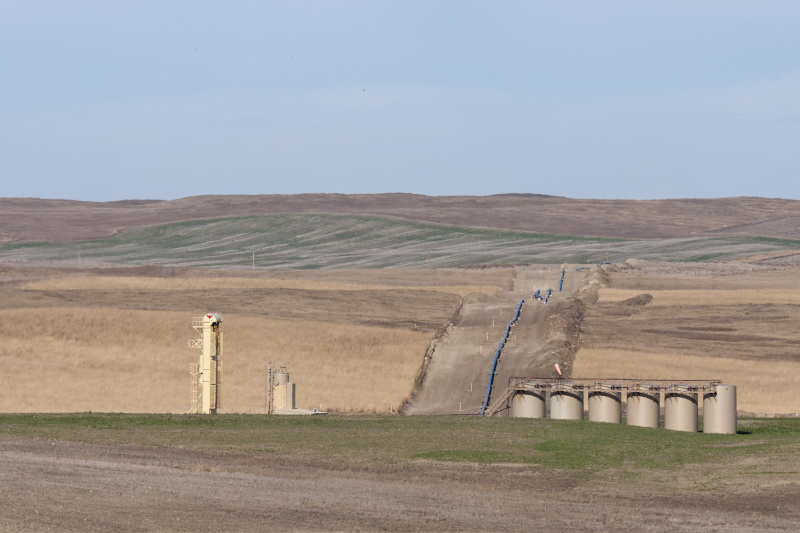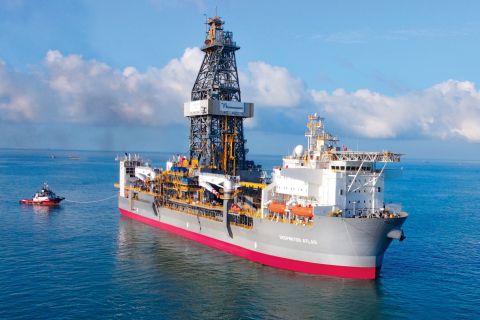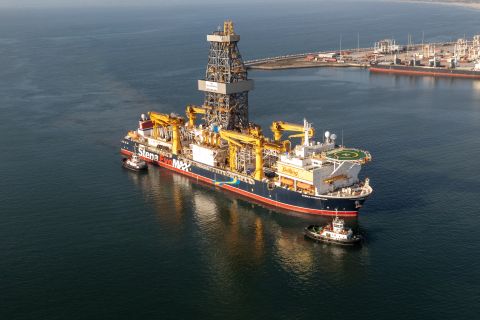Presented by:

Subscribe to the digital publication here.
Like the rest of the U.S., 2020 was one of those years for the Bakken.
A report from the U.S. Energy Information Agency (EIA) said that North Dakota’s crude oil output between December 2019 and May 2020 fell from about 40%, an average of 1.5 million bbl/d to 900,000 bbl/d. According to the report, the production decline is greater than it would have been if producers halted new drilling and allowed production from current wells to naturally decline.
With only natural declines, the analysis shows that crude oil production for most of the state of North Dakota would have been approximately 1.1 million bbl/d in May 2020, approximately 400,000 bbl/d more than those wells actually reported. According to the EIA, the difference suggests that many producers decided to reduce production from their existing wells beyond the volume the wells would have naturally declined.
Oil
Most of the Peace Garden’s State’s production decline was due low crude oil prices.
After averaging $55.70/bbl in 2019, monthly prices in North Dakota (average of Bakken Clearbrook and Bakken Guernsey prices) averaged $29.82/bbl in May 2020 after having declined as low as $38.13 per barrel in April. According to survey data from the Federal Reserve Bank of Dallas, the region’s producers need prices of at least $28/bbl on average to cover their operating expenses and $51/bbl to drill new wells.
Demand has also been a major factor in output due to reduced oil and gas demand from the coronavirus pandemic.
According to Lynn Helms, director of North Dakota’s Department of Mineral Resources: “It was a pretty terrible year for the industry and producers will be stressed from both ends—the investment end due to the environmental, social and governance factors and the markets end due to the loss of demand.”
The director said that that growth in demand is only expected to resume from late-2021 at the earliest. On top of an improvement in consumption, growth in shale depends on investments to replace wells that decline rapidly.

Gas
According to data compiled by S&P Platts Analytics, dry gas production is hitting record highs in the play. Additional processing capacity could further increase already record Bakken production.
In September, North Dakota’s Industrial Commission approved a revised gas capture policy to encourage investment in infrastructure without changing the gas capture targets. The September policy required companies to capture 88% of the Bakken natural gas they produce.
A November report by the North Dakota Department of Mineral Resources said that North Dakota oil and gas producers actually achieved 93% (statewide) gas capture by the end of the year when month-over-month oil and gas production increased.
Bakken production has increased to 2.1 Bcf/d, which is 135 MMcf/d above December 2019 and is an all-time record. This has also pushed Bakken utilization on Northern Border Pipeline to new highs, at 2 Bcf/d, or about 180 MMcf/d above December 2019 levels.
Rigs
According to rig count data from Baker Hughes, the North Dakota rig count in January 2020 was 52 and as of January 2021, the rig count is 10. Montana’s rig count has hovered between zero and one rig in the state during the same period.
While Kraken Oil & Gas had some success in Richland and Roosevelt counties in neighboring Montana, the state had one operating between January and April 2020, but has not had an operating rig since then.
Dakota Access Pipeline
A federal appeals court recently upheld a district judge’s ruling for a full environmental impact review of the Dakota Access pipeline. Following a complaint by the Standing Rock Sioux Tribe, a more extensive review was necessary than the one already conducted by the U.S. Army Corps of Engineers. The tribe, which draws its water from the river, says it fears pollution. The appeals court ruling does not require the pipeline to stop operating or be emptied of oil.
The 1,172-mile pipeline crosses beneath the Missouri River, just north of the Standing Rock Sioux Reservation that straddles the North Dakota-South Dakota border.

In October 2020, the Illinois Commerce Commission gave approval to the owners of the pipeline to double capacity on the pipeline. The pipeline can transport about 570,000 barrels per day of crude oil from North Dakota to the Midwest, with connections to the Gulf Coast.
Bakken Activity Highlights
Several Bakken operators have begun developing both Bakken and Three Forks production from the same drillpad.
- In McKenzie County, N.D., Continental Resources Inc. completed a Middle Bakken and an Upper Three Forks well from a Elm Tree Field drillpad in Section 26-153n-94w. The #12-26H Bohmbach Federal was tested flowing 1,751 bbl of 44.5° API oil, with 1.544 MMcf of gas and 1,149 bbl of water per day (Middle Bakken) and the offsetting #13-26H1 Bohmbach Federal produced 925 bbl of 44.5° API oil, 1.416 MMcf of gas and 1,158 bbl of water daily from Upper Three Forks.
- Burlington Resources Oil & Gas completed a Middle Bakken well and a Middle Three Forks well at a Dunn County, N.D., drillpad in Little Knife Field. The #44-36TFH Franklin initially flowed 230 bbl of 41° API oil, 276,000 cu ft and 5,717 bbl of water per day from Middle Three Forks. The #34-36MBH-2NH Franklin produced 278 bbl of 30.5° API oil and 504,000 cu ft of gas per day from Middle Bakken.
- In McKenzie County, N.D., Oasis Petroleum completed an Upper Three Forks and a Middle Bakken well from a Banks Field drillpad in Section 32-153n-97w. The #5397 42-32 8T Joplin was tested after 33-stage fracturing flowing 743 bbl of oil, 1.555 MMcf of gas and 1,555 bbl of water daily from Three Forks The #5397 42-32 7B Joplin produced 1,183 bbl of oil with 2.807 MMcf of gas and 1,213 bbl or water per day from Middle Bakken perforations at 11,588-22,401 ft.
- Hess Corp. completed a Three Forks and a Middle Bakken well in Blue Buttes Field from a pad in Section 8-151n-95w in McKenzie County, N.D. The #151-95-0915H-1 BB-Federal A-LS produced 3,401 bbl of oil, 7.98 MMcf of gas and 1,382 bbl of water daily from Three Forks. The #151-95-0915H-2 BB-Federal A-LS is a Bakken producer and it was tested flowing 3,466 bbl of oil, 7.15 MMcf of gas and 2,063 bbl of water per day.
- In the Blue Buttes Field portion of McKenzie County, N.D., Hess Corp. completed a Three Forks producer and a Middle Bakken producer from a drillpad in Section 9-150n-95w. The #150-95-09H-10 BB-Olson flowed 2,708 bbl of oil, 5.029 MMcf of gas and 1,393 bbl of water per day from Middle Bakken. The Three Forks producer, #150-95-09H-7 BB-Olson, produced 3,044 bbl of oil, 7.479 MMcf of gas and 1,869 bbl of water per day.
Recommended Reading
E&P Highlights: March 15, 2024
2024-03-15 - Here’s a roundup of the latest E&P headlines, including a new discovery and offshore contract awards.
Rystad: More Deepwater Wells to be Drilled in 2024
2024-02-29 - Upstream majors dive into deeper and frontier waters while exploration budgets for 2024 remain flat.
E&P Highlights: Feb. 16, 2024
2024-02-19 - From the mobile offshore production unit arriving at the Nong Yao Field offshore Thailand to approval for the Castorone vessel to resume operations, below is a compilation of the latest headlines in the E&P space.
E&P Highlights: March 4, 2024
2024-03-04 - Here’s a roundup of the latest E&P headlines, including a reserves update and new contract awards.
Stena Evolution Upgrade Planned for Sparta Ops
2024-03-27 - The seventh-gen drillship will be upgraded with a 20,000-psi equipment package starting in 2026.





